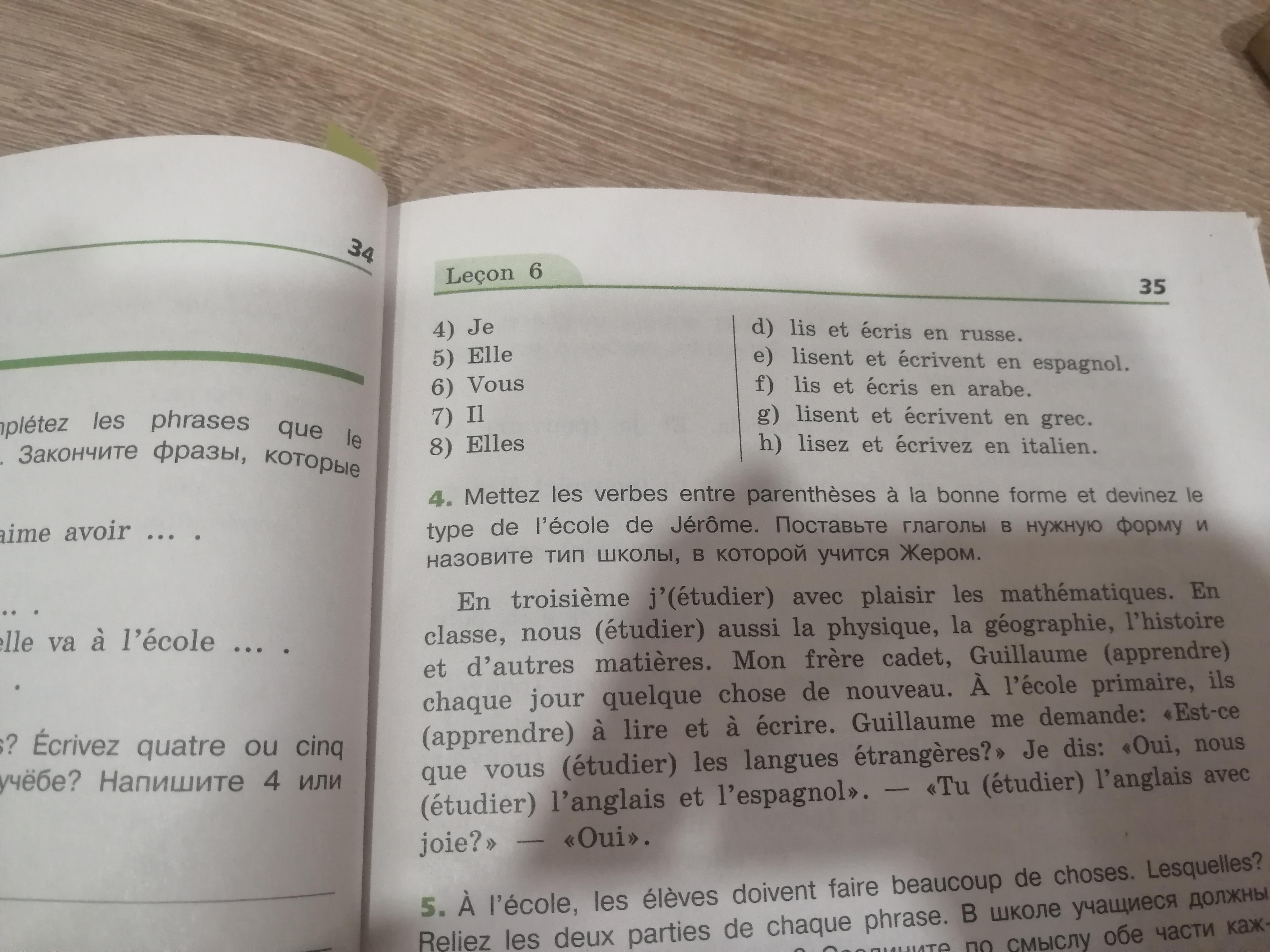Предмет: Французский язык,
автор: riaristos5od5s9592
4 задание пожалуйста пожалуйста пожалуйста пожалуйста пожалуйста пожалуйста пожалуйста пожалуйста пожалуйста пожалуйста пожалуйста пожалуйста пожалуйста пожалуйста пожалуйста пожалуйста пожалуйста пожалуйста пожалуйста пожалуйста
Приложения:

Ответы
Автор ответа:
0
4. Поместите глаголы в круглые скобки в правильную форму и угадайте тип школы Иеронима. NocTaBbTe rnaronbi B HYXHYIO þopMy n HA3OBNTE TUN WKONBI, B KOTOPO YYUTCA KepoM. В третьих (изучаю) с удовольствием математику. В классе мы (изучаем) также физику, географию, историю и другие предметы. Мой младший брат Гийом (узнает) что-то новое каждый день. В начальной школе они (учатся) читать и писать. Гийом спрашивает меня: "Ты (изучаешь) иностранные языки?" Я говорю: «Да, мы (изучаем) английский и испанский». - "Вы (изучаете) английский с радостью?" - "ВОЗ".
Похожие вопросы
Предмет: Геометрия,
автор: лол12354
Предмет: Математика,
автор: dobkina4
Предмет: Английский язык,
автор: Mrkaintt
Предмет: Физика,
автор: artemfat567
Предмет: Алгебра,
автор: батя153